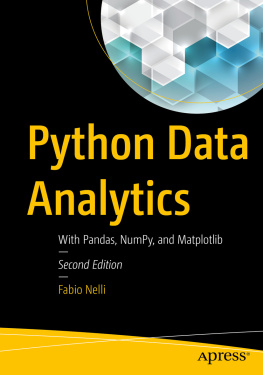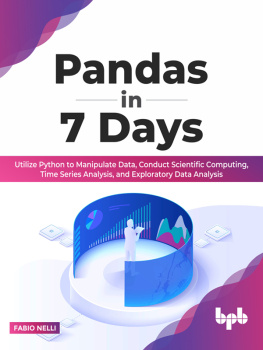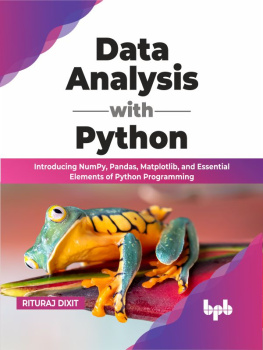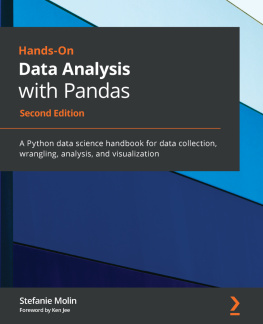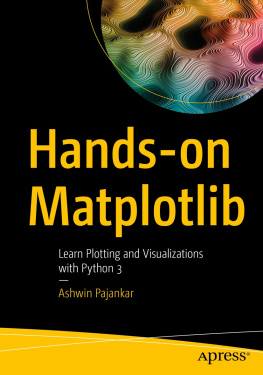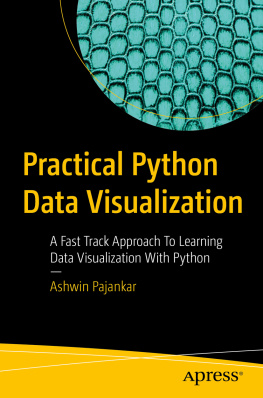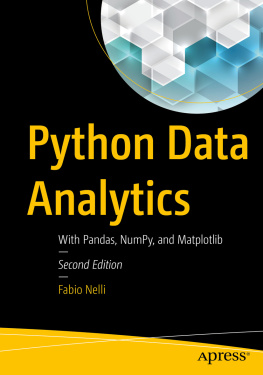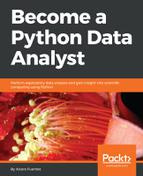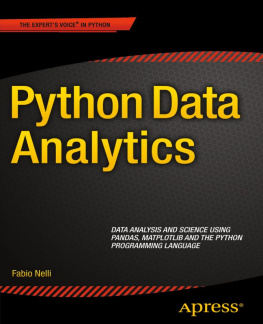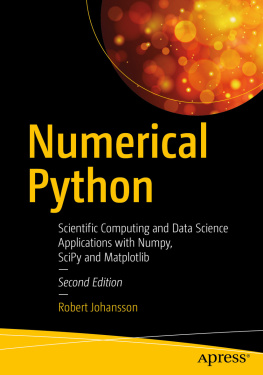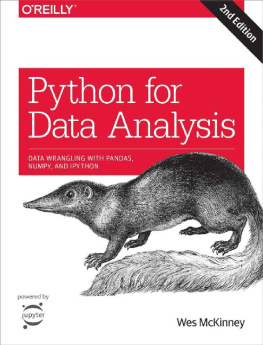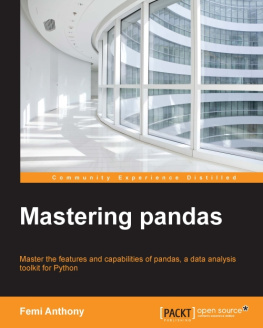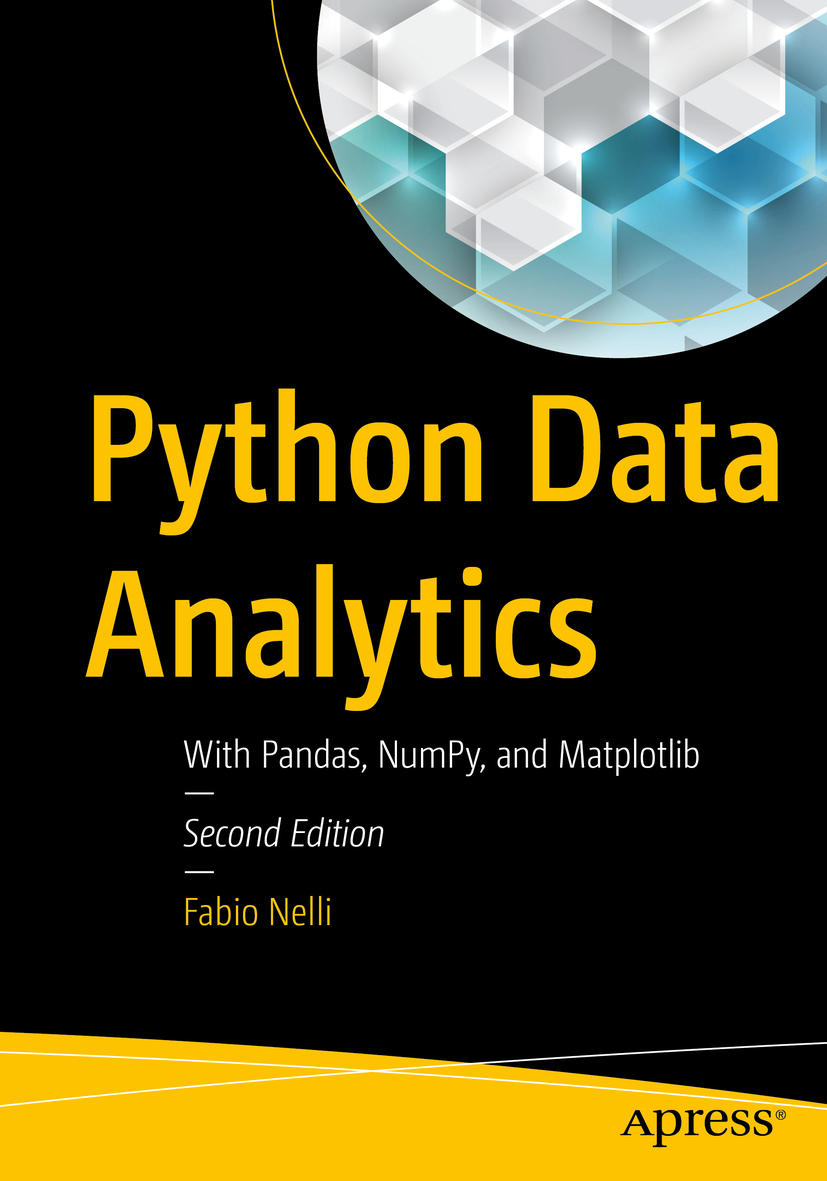Fabio Nelli
Python Data Analytics With Pandas, NumPy, and Matplotlib 2nd ed.
Any source code or other supplementary material referenced by the author in this book is available to readers on GitHub via the books product page, located at www.apress.com/9781484239124 . For more detailed information, please visit http://www.apress.com/source-code .
ISBN 978-1-4842-3912-4 e-ISBN 978-1-4842-3913-1
https://doi.org/10.1007/978-1-4842-3913-1
Library of Congress Control Number: 2018957991
Fabio Nelli 2018
This work is subject to copyright. All rights are reserved by the Publisher, whether the whole or part of the material is concerned, specifically the rights of translation, reprinting, reuse of illustrations, recitation, broadcasting, reproduction on microfilms or in any other physical way, and transmission or information storage and retrieval, electronic adaptation, computer software, or by similar or dissimilar methodology now known or hereafter developed.
Trademarked names, logos, and images may appear in this book. Rather than use a trademark symbol with every occurrence of a trademarked name, logo, or image we use the names, logos, and images only in an editorial fashion and to the benefit of the trademark owner, with no intention of infringement of the trademark. The use in this publication of trade names, trademarks, service marks, and similar terms, even if they are not identified as such, is not to be taken as an expression of opinion as to whether or not they are subject to proprietary rights.
While the advice and information in this book are believed to be true and accurate at the date of publication, neither the authors nor the editors nor the publisher can accept any legal responsibility for any errors or omissions that may be made. The publisher makes no warranty, express or implied, with respect to the material contained herein.
Distributed to the book trade worldwide by Springer Science+Business Media New York, 233 Spring Street, 6th Floor, New York, NY 10013. Phone 1-800-SPRINGER, fax (201) 348-4505, e-mail orders-ny@springer-sbm.com, or visit www.springeronline.com. Apress Media, LLC is a California LLC and the sole member (owner) is Springer Science + Business Media Finance Inc (SSBM Finance Inc). SSBM Finance Inc is a Delaware corporation.
Science leads us forward in knowledge, but only analysis makes us more aware
This book is dedicated to all those who are constantly looking for awareness
Table of Contents
About the Author and About the Technical Reviewer
About the Author
Fabio Nelli
is a data scientist and Python consultant, designing and developing Python applications for data analysis and visualization. He has experience with the scientific world, having performed various data analysis roles in pharmaceutical chemistry for private research companies and universities. He has been a computer consultant for many years at IBM, EDS, and Hewlett-Packard, along with several banks and insurance companies. He has an organic chemistry masters degree and a bachelors degree in information technologies and automation systems, with many years of experience in life sciences (as as Tech Specialist at Beckman Coulter, Tecan, Sciex).
For further info and other examples, visit his page at https://www.meccanismocomplesso.org and the GitHub page https://github.com/meccanismocomplesso .
About the Technical Reviewer
Raul Samayoa
is a senior software developer and machine learning specialist with many years of experience in the financial industry. An MSc graduate from the Georgia Institute of Technology, hes never met a neural network or dataset he did not like. Hes fond of evangelizing the use of DevOps tools for data science and software development.
Raul enjoys the energy of his hometown of Toronto, Canada, where he runs marathons, volunteers as a technology instructor with the University of Toronto coders, and likes to work with data in Python and R.
Fabio Nelli 2018
Fabio Nelli Python Data Analytics https://doi.org/10.1007/978-1-4842-3913-1_1
1. An Introduction to Data Analysis
In this chapter, you begin to take the first steps in the world of data analysis, learning in detail about all the concepts and processes that make up this discipline. The concepts discussed in this chapter are helpful background for the following chapters, where these concepts and procedures will be applied in the form of Python code, through the use of several libraries that will be discussed in just as many chapters.
Data Analysis
In a world increasingly centralized around information technology, huge amounts of data are produced and stored each day. Often these data come from automatic detection systems, sensors, and scientific instrumentation, or you produce them daily and unconsciously every time you make a withdrawal from the bank or make a purchase, when you record various blogs, or even when you post on social networks.
But what are the data? The data actually are not information, at least in terms of their form. In the formless stream of bytes, at first glance it is difficult to understand their essence if not strictly the number, word, or time that they report. Information is actually the result of processing, which, taking into account a certain dataset, extracts some conclusions that can be used in various ways. This process of extracting information from raw data is called data analysis .
The purpose of data analysis is to extract information that is not easily deducible but that, when understood, leads to the possibility of carrying out studies on the mechanisms of the systems that have produced them, thus allowing you to forecast possible responses of these systems and their evolution in time.
Starting from a simple methodical approach on data protection, data analysis has become a real discipline, leading to the development of real methodologies generating models. The model is in fact the translation into a mathematical form of a system placed under study. Once there is a mathematical or logical form that can describe system responses under different levels of precision, you can then make predictions about its development or response to certain inputs. Thus the aim of data analysis is not the model, but the quality of its predictive power .
The predictive power of a model depends not only on the quality of the modeling techniques but also on the ability to choose a good dataset upon which to build the entire data analysis process. So the search for data, their extraction, and their subsequent preparation, while representing preliminary activities of an analysis, also belong to data analysis itself, because of their importance in the success of the results.
So far we have spoken of data, their handling, and their processing through calculation procedures. In parallel to all stages of processing of data analysis, various methods of

